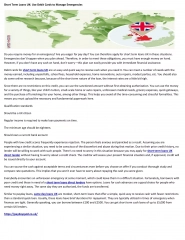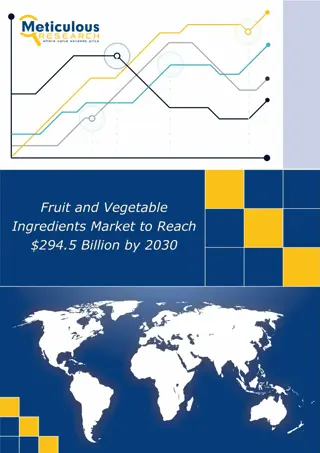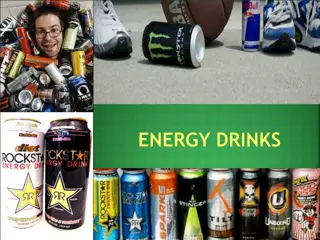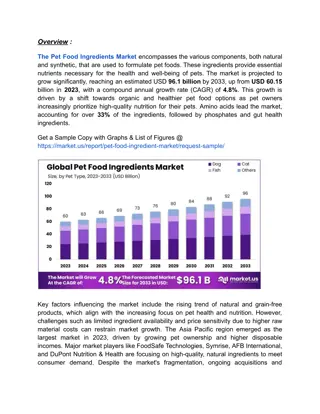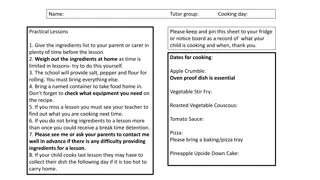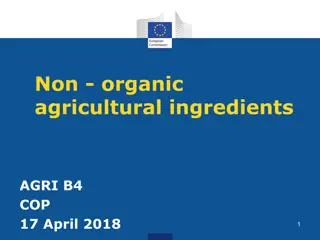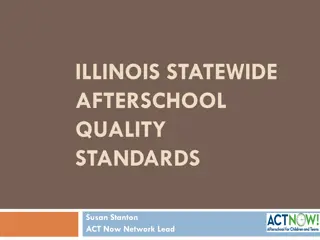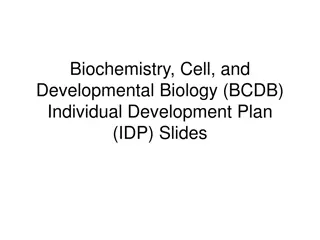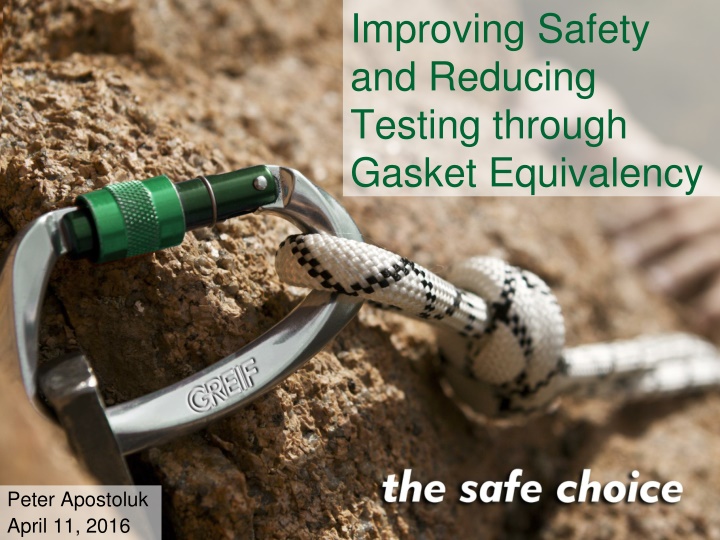
Afterschool Programs: Key Ingredients and Short-Term Effects
Key ingredients and short-term effects of afterschool programs are explored in this presentation, highlighting program quality, engagement, relationships, and outcomes. Meta-analysis data on social and academic outcomes is also discussed.
Download Presentation

Please find below an Image/Link to download the presentation.
The content on the website is provided AS IS for your information and personal use only. It may not be sold, licensed, or shared on other websites without obtaining consent from the author. If you encounter any issues during the download, it is possible that the publisher has removed the file from their server.
You are allowed to download the files provided on this website for personal or commercial use, subject to the condition that they are used lawfully. All files are the property of their respective owners.
The content on the website is provided AS IS for your information and personal use only. It may not be sold, licensed, or shared on other websites without obtaining consent from the author.
E N D
Presentation Transcript
Improving Safety and Reducing Testing through Gasket Equivalency Peter Apostoluk April 11, 2016
Purpose To review current regulations on non-bulk and intermediate bulk packaging, with respect to closure gaskets and sealing elements, design type definitions, and testing requirements To develop a closure gasket equivalency program for non-bulk and intermediate bulk packaging based on fundamental construction properties of gaskets To further define and expand the use of selective testing in qualification of new gasket materials To improve public safety by providing a selective testing format that will help qualify more variations of gaskets and verify equivalency of gasket variations 2
49 CFR 178.601(g) Non Bulk (4) A different packaging is one that differs (i.e. is not identical) from a previously produced packaging in structural design, size, material of construction, wall thickness or manner of construction but does not include: (i) A packaging which differs only in surface treatment; (ii) A combination packaging which differs only in that the outer packaging has been successfully tested with different inner packagings. A variety of such inner packagings may be assembled in this outer packaging without further testing; (iii) A plastic packaging which differs only with regard to additives which conform to 178.509(b)(3) or 178.517(b) (4) or (5) of this part; (iv) A combination packaging with inner packagings conforming to the provisions of paragraph (g) of this section; (v) Packagings which differ from the design type only in their lesser design height; or (vi) For a steel drum, variations in design elements which do not constitute a different design type under the provisions of paragraph (g)(8) of this section. 3
Variation 5 of 178.601 (5) Variation 5. Single packagings (i.e., non-bulk packagings other than combination packagings), that differ from a tested design type only to the extent that the closure device or gasketing differs from that used in the originally tested design type, may be used without further testing, provided an equivalent level of performance is maintained, subject to the following conditions (the qualifying tests): (i) A packaging with the replacement closure devices or gasketing must successfully pass the drop test specified in 178.603 in the orientation which most severely tests the integrity of the closure or gasket; (ii) When intended to contain liquids, a packaging with the replacement closure devices or gasketing must successfully pass the leakproofness test specified in 178.604, the hydrostatic pressure test specified in 178.605, and the stacking test specified in 178.606. Replacement closures and gasketings qualified under the above test requirements are authorized without additional testing for packagings described in paragraph (g)(3) of this section. 4
Variation 5 additional allowances Replacement closures and gasketings qualified under the above test requirements also are authorized without additional testing for different tested design types packagings of the same type as the originally tested packaging, provided the original design type tests are more severe or comparable to tests which would otherwise be conducted on the packaging with the replacement closures or gasketings. The packaging used in the qualifying tests has a lesser packaging wall thickness than the packaging with replacement closure devices or gasketing The gross mass of the packaging used in the qualifying drop test equals or exceeds the mass for which the packaging with replacement closure devices or gasketing was tested; the packaging used in the qualifying drop test was dropped from the same or greater height than the height from which the packaging with replacement closure devices or gasketing was dropped in design type tests The specific gravity of the substance used in the qualifying drop test was the same or greater than the specific gravity of the liquid used in the design type tests of the packaging with replacement closure devices or gasketing.) 5
49 CFR 178.800 IBC Standards 178.700 Purpose, scope and definitions. (a) This subpart prescribes requirements applying to IBCs intended for the transportation of hazardous materials. Standards for these packagings are based on the UN Recommendations. (b) Terms used in this subpart are defined in 171.8 of this subchapter and in paragraph (c) of this section. (c) The following definitions pertain to the IBC standards in this subpart. (1) Body means the receptacle proper (including openings and their closures, but not including service equipment) that has a volumetric capacity of not more than 3 cubic meters (3,000 L, 793 gallons, or 106 cubic feet). (2) Service equipment means filling and discharge, pressure relief, safety, heating and heat-insulating devices and measuring instruments. (3) Structural equipment means the reinforcing, fastening, handling, protective or stabilizing members of the body or stacking load bearing structural members (such as metal cages). 6
Approval granted to RIBCA RIBCA members worked with PHMSA to develop a competent authority approval on IBC receptacle top closure gaskets. We were granted a selective testing approval in October 2015 - reference to 49 CFR 178.801(h) The approval allows for IBC manufacturers to use a different gasket type in the top fill port device, other than the gasket type used during design testing, when that different gasket type has been qualified through selective testing Each different gasket type must be tested to demonstrate that the top closure with the different gasket can withstand a leakproofness test and a hydrostatic pressure test Such replacement gaskets are authorized without additional testing on different IBC designs fitted with the identical top closure device, and subject to equal or lower design test pressures. 7
IBC approval talking points The DOT approval authorizes selective testing by top closure gasket type The approval limits selective testing to leakproofness and hydrostatic pressure only No additional testing is required on different designs fitted with the identical top closure devices 8
The opportunities ahead of us As an industry we have an opportunity to discuss and define all gasket types for all non bulk and intermediate bulk containers, including drums and IBCs. We have the opportunity to develop a gasket equivalency position based on industry knowledge and testing of gaskets We also have the opportunity to improve public safety by using selective testing and gasket equivalency to evaluate and support the growth of new gasket types 9
Gasket requirements and properties Bench marks for excellent gasket properties Requirements for a gaskets Good compressibility Good recovery Strength Limited relaxation Chemical resistance Temperature resistance Chemical resistance Temperature resistance Mechanical property Compression Recovery Durometer 10
Gasket categories Three categories of non-metallic gaskets are: Unsaturated rubbers that can be cured by vulcanization Saturated rubbers that can not be cured by vulcanization Thermoplastic elastomers 11
Unsaturated rubbers Natural polyisoprene Synthetic polyisoprene Polybutadiene Chloropene rubber, neoprene Butyl rubber Styrene butadiene rubber Nitrile rubber - Buna N 12
Saturated rubbers EPM (ethylene propylene copolymer of ethylene and propylene) and EPDM (ethylene propylene diene - a terpolymer of ethylene, propylene and a diene component) Polyacrylic rubber Silicone rubber Fluorosilicone rubber Fluoroelastomers Viton, Teflon Perfluoroelastomers Chlorosulfonated polyethylene Ethylene vinyl acetate EVA 13
Thermoplastic elastomers Styrenic block copolymers (TPE-s) Polyolefin blends (TPE-o) Santoprene Elastomeric alloys (TPE-v or TPV) Santoprene vulcanites Thermoplastic polyurethanes (TPU) Thermoplastic copolyester Thermoplastic polyamides. 14
Are you an interested party? IPANA/RIBCA/PDI/RIPA IOPP CPC UN test labs Packaging consultants Chemical fillers Container end users 15
Topics to address in a work group Gasket type categories Chemical compatibility and mechanical properties Selective testing of gaskets reduced gasket testing Closure torques of gasket types and subtypes 16

